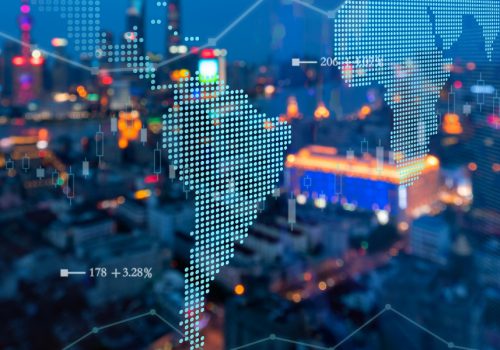The corruption of resources to the people who need them undermines trust in institutions and exacerbates the great inequalities in today’s society. For this reason, the fight against corruption is one of the most relevant demands of the global community since the end of the 20th century and costs the global economy every year 3.6 trillion dollars per year, as mentioned by the Secretary-General of the National United in your message for the international day against corruption. And, the aggravating factor is that those less developed countries are the most vulnerable to suffering the consequences. In response, since 1997, the members of the OECD have established the need to criminalize the bribery of public officials abroad, which has resulted in the emergence of national laws that impose sanctions on legal persons for this type of activity, and/or the allocation of more financial resources to prevent and investigate them.
To cite an example, for bribery cases committed under the jurisdiction of the United States Justice, the sanctioned companies have paid an average fine of USD 42,960,203. In this context, organizations have been encouraged to develop and/or strengthen their anti-bribery management systems in order to be able to identify early outflows of funds that could be destined for the bribery of a public official and, in this way, avoid exposing oneself to sanctions, not only economic but also reputational and operational.
This objective is very challenging for companies since the scheme to disguise the payment of a bribe can take different forms and be easily hidden in their accounting because of the lack of sufficient data about the economic transactions. As the delivery of cash directly to the public official would be very uncommon, we can detail some vehicles (modus operandi) that have been used to commit bribes:
- Give lavish gifts directly to the public official. The company usually does not know if the beneficiary of the gift is a government official.
- Hiring a supplier who turns out to be an entity linked to the public official. The company usually does not know 100% information about the ultimate beneficial owners of a vendor.
- Third-party payment of the bribe through the hiring of a provider for services not provided later or are overpriced. It is very difficult to collect and analyze sufficient information about every transaction.
- Donating to a non-profit organization linked to the public official. The company usually does not know 100% information about the ultimate beneficial owners of a donation.
- Hiring an employee that is recommended by the public official. The company usually does not gather enough information about all applicants.
- Paying the bribe through payment in advance to a vendor that is later written off. It is very difficult to collect and analyze sufficient information about every transaction.
Inevitably, it is relevant to have a mechanism that allows identifying suspicious transactions that require an indepth analysis just by reviewing the accounting records of the organization itself. Today, this selection of transactions is made from a manual review of accounting records by experts in the detection and investigation of corruption, who use their judgment and choose those that are most suspicious. To carry out this procedure, they use their accumulated knowledge of previously investigated cases and the search for certain characteristics in the transactions, such as the accounting account where the outflow of funds was imputed, the amount, its nature, the beneficiary of the payment, etc.
In other words, they label (classify) transactions that may be suspicious and then be analyzed in detail. The disadvantage of this process is that it is very difficult that all sensitive transactions can be classified due to the number of accounting records to be reviewed, increasing the risk of not detecting an outflow of funds linked to the payment of a bribe. Likewise, the particular analysis of the transactions classified as suspicious implies a cost for the organization, therefore, choosing them correctly also becomes relevant.

Having said this, the primary weapon to fight against corruption is information. If you have enough data about the transaction, it is very unlikely that a corruption scheme could be performed. The lack of information allows an employee of questionable morals to give something of value to a government official to obtain privileged information about a public tender. The vehicle to do that could be -for example- buying airline tickets in first class for the government official family. If the company does not have enough information about the transaction, it is easy for the employee to hide this expense as a regular organization spending. And, for sure, it is difficult to connect the public tender with the employee and the government official.
However, if you know all the current and potential connections between a government official and all the employees, vendors, and third parties of a company, you are in a position to easily identify an inappropriate benefit received by that government official from the company. Of course, it is very challenging to gather information about all current and potential connections between them. There are many different sources of information to be analyzed that provide structured to unstructured data. In addition, there is a lot of information from internal databases and public sources to acquire a better understanding of each transaction under analysis: economic activity, accounting account, number of employees of the supplier linked to the transaction, number of inhabitants of the supplier’s fiscal domicile, amount, type of organization of the supplier, text that describes the transaction, if the provider has a website, adverse media and negative reputation, if the provider appears in a watchlist or a data leak (like Panama Papers, etc).
How is data changing the fight against corruption?
Nowadays, Big Data and automation technologies are being used as tools against corruption and in enhancing governance and transparency. To stay ahead of advanced bad actors and meet the rising expectations of regulators, organizations are investing more into technology to enhance their internal compliance programs.
Many are pushing for governments to start using technology to fight corruption. Since AI is being used as a tool against corruption, big data and analytics will contribute heavily to that process as well. Having started with apps, such as iPaidABribe, allows citizens to report any encounter with corrupt officials, generating rich data sets for anticorruption activists. However, big data grants the ability to mine huge amounts of data for patterns that reveal corrupt activity, making it a very powerful tool. As an analytic method, it needs a massive amount of data to uncover previous correlations. For instance, big data techniques can uncover fraud or bribery patterns by combing through datasets on government bidding processes, contracting firms’ financial disclosures, public officials’ tax records, and the correlation could be quite meaningful. Although big data seems like a cutting-edge technological approach to fight corruption, it has been around for decades, getting more progressive with each day.
Here is an example of how big data is being used: These new projects are similar to Checkbook NYC, which has been around since 2010 and whose motto is “Government Spending at Taxpayer’s Fingertips.” Checkbook NYC is a portal established by the Comptroller of the City of New York to let citizens monitor the city’s $70 billion annual budget using its own internal accounting data. Citizens can download the data and use Big Data analysis techniques to reveal patterns that might indicate corruption — a powerful deterrent. Checkbook NYC is open-source software that other cities can copy and use for themselves.
In addition, another example of how organizations can use data analytics to identify risky transactions is the case of Microsoft. They asked PwC to design an innovative solution that can help them not only detect corruption but also help to avoid that these potential risks from becoming issues.
Through the use of technologies such as data visualization, artificial intelligence, machine learning, etc., this solution provides real-time compliance reviews during the sales deal lifecycle. As such, they uncover corruption risks by identifying trends, relationships, and irregularities. In order to be able to identify “high-risk deals”, a new operating model was created which will “flag” these transactions.
Being able to identify corruption risks in the early stages will help organizations to reduce the risks, as well as review the measures in place, if they are effective or not.
In conclusion, if the company wants to fight corruption, it must embrace big data. Corruption schemes are not too sophisticated. Organizations do not extract, transform and load all relevant data they need to detect it. In order to prevent -for example- a conflict of interest, you have to create a data lake where you can collect all the information about your business ecosystem: social networks, media, public entities records, and the internet. Once you have it, you will be able to build a graph database where you can see if a vendor and employee are connected.
These are examples of what you can do nowadays. There is a lot of data waiting to be exploited to improve the way companies fight against corruption.









